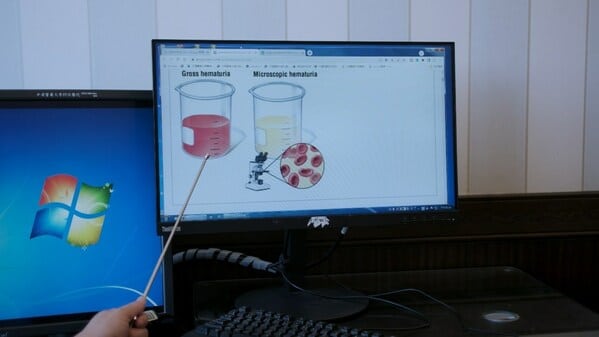TAICHUNG, Taiwan, April 3, 2024 /PRNewswire/ — The urine sediment examination is primarily used to detect and assess kidney and urinary system health. In the conventional practice, a urine sediment test covers six items: red blood cells, white blood cells, squamous cells, urinary casts, crystals, and bacteria, while urine bacterial culture and pathological diagnostics may require an additional week. As artificial intelligence (AI) interpretation of pathologic tests still poses a challenge to current technology, manual interpretation is subject to personal experience and the possibility of overlooking abnormal cells. To address these challenges, the Center of Laboratory Medicine and AI Center at China Medical University Hospital (CMUH, Taiwan) collaborated to develop “Intelligent Urine Sediment Morphology Analysis (IUSMA).” IUSMA utilizes AI to assist in urine sediment identification and provides a comprehensive report of at least 21 items within just 10 minutes, including difficult-to-detect dysmorphic red blood cells, urothelial cells, tubular epithelial cells, Trichomonas vaginalis, and cancer cells. It is useful in supporting physicians in the early discovery of urinary system damage or anomalies,” said Dr. Po-Ren Hsueh, Superintendent of the Center of Laboratory Medicine at CMUH, Taiwan.
In cases of microscopic hematuria, the color of urine remains unchanged and is not visibly altered to the naked eye. Conversely, gross hematuria indicates significantly more severe glomerular inflammation.
Mrs. Hsiao, 58, complained of turbid, deep brown urine (hematuria) following weeks of back pain. A routine urine test showed abnormal findings, including occult blood 3+, urine protein 2+, and leukocyte esterase 1+ (normally negative), suggesting that a renal biopsy is warranted to confirm the cause as nephritis or urinary tract infection. Dr. Huey-Liang Kuo, Director of the Hemodialysis Center at CMUH, tested Mrs. Hsiao’s urine sediment with IUSMA. Ten minutes later, the results showed the presence of bacteria, red blood cells, white blood cells, squamous cells, dysmorphic red blood cells, and urothelial cells. The AI model suggested that Mrs. Hsiao had chronic glomerulonephritis (CGN). Her condition improved with appropriate treatment.
CGN is a condition involving the inflammatory reaction triggered by the accumulation of antigen-antibody immune complexes in glomeruli or direct antibody activity against the antigen on glomerular cells, activating immunity-related proteins. This leads to the mass infiltration of phagocytic leukocytes into glomeruli and the release of inflammatory substances, further triggering an immune reaction cascade. “This can result in persistent glomerular inflammation for 1-2 years or even longer, which can progress to chronic kidney failure, or even end-stage renal disease (ESRD) or uremia. Patients usually have complaints of nausea, vomiting, anemia, poor appetite, difficulty breathing, and fatigue. Hemodialysis may be required in severe cases,” said Dr. Kuo.
Medical experts emphasize that CGN has become a serious health concern in Taiwan, currently the second primary cause of ESRD. Patients are advised to seek medical attention immediately in cases of pain, reduced urine output, abnormal urine color, and/or turbidity. The IUSMA can assist doctors in speeding up diagnosis and subsequent treatment, benefiting patients.
Media Contact:
Carolyn Chen
100709@tool.caaumed.org.tw
View original content to download multimedia: Read More
